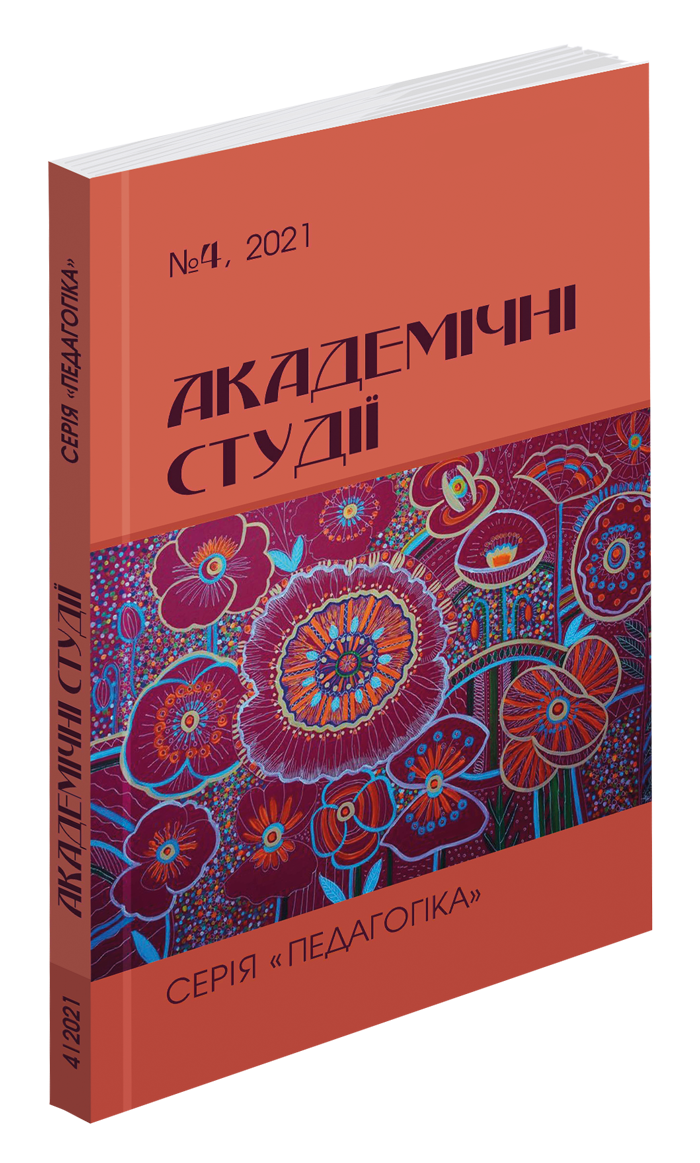Abstract
This article is to outline further possibilities of the development of bilingual education at high school in Ukraine. As well as the use of the interactive modern technologies for education. Been specific use of English language (considering EMI) as a bilingual unit together with Ukrainian language at the universities. The current issue of bilingual education with the use of interactive educational technologies can be differentiated into many branches. This article is to clarify the opportunity’s provided with the development of bilingual education at high school in Ukraine. Both Ukrainian and English language can be considered as dynamic, democratic rapidly growth and developing to play leading parts in the world. Technological progress is to justify the relevance of the issue. English language as a bilingual unit should play the curtail role in study as world leading, democratic, international language. Every single year Ukrainians are to master standards of Europe. In particular online interactive study of students, video meetings as Google Meet, Microsoft Teams and others could be named. The quality of the equipment is evolving as well. Lecturers and students are to master Outlook Office options, different Google applications (as video meetings, applications created for sharing and storing information, test generation, interviews, both video and audio educational files and so on) as well as additional educational software from the Microsoft and many other tips and tools. Therefore, we can assume that further integration of interactive technologies in Ukraine (been more specific to boost the correlations between the Ukrainian and English language bilingual educational issues) at high school is to show its relevance. The issue of the effective use of full or part integration in the field of the bilingual education is to be considered.
References
Долженков О. О. Формування початкового професійного досвіду майбутніх менеджерів освіти засобами ігрових технологій навчання. Педагогічні науки: теорія, історія, інноваційні технології. 2015. № 2. С. 423–432.
Епік Н. М. Інтерактивні форми навчання як засіб оптимізації мовленнєвих компетенцій. Англійська мова та література. 2013. № 15. С. 5–9.
Калініна Л. В. English after Classes : Метод. посіб. для позакл. роботи. Веста: Вид-во «Ранок», 2005. C. 208.
Маклагіна І. Ю. Інтерактивні технології в навчанні іноземної. Aнглійська мова та література. 2010. № 22–23. С. 17–19.
Марченко Ю. Г. Психолого-педагогічні засади впровадження інтерактивних технологій навчання для розвитку іншомовної комунікативної компетентності майбутніх фахівців. Сучасні інформаційні технології та інноваційні методики навчання у підготовці фахівців: методологія, теорія, досвід, проблеми. 2016. № 45. C. 367.
Мічуріна Т. В. Дебати як форма інтерактивного вивчення англійської мови старшокласниками. Англійська мова та література: журнал. 2012. № 22–23. С. 6–10.
Пантюшенко Н. Г. Використання інформаційно-комп’ютерних технологій у викладанні мови. Англійська мова та література: журнал. 2013. № 16–18. С. 80–84.
Cummins J. Putting language proficiency in its place: Responding to critiques of the conversational academic language distinction. English in Europe: The Acquisition of a third Language. Clevedon. 2000. Р. 170.
Dearden J. English as a medium of instruction – a Growing global phenomen. Oxford. 2019. Р. 40.
Lisa Irish. Blended learning tool works best. Arizona Education News Service. 2019. P. 1–10.
Luk, G., Mesite, L., & Leon Guerrero, S. Onset age of second language acquisition and fractional anisotropy variation in multilingual young adults. Journal of Neurolinguistics. 2020. P. 120.
Marsh D. Content and Language Integrated Learning: the European Dimension – Actions, Trends and Foresight potential. On the use of bilingual technologies in the process of learning English the language in high school. RUDN Journal of Informatization of Education. Vol 14, 2002. P. 484–492.
Oller, J. W., Jr. Introduction [to Language and Bilingualism: More Tests of Tests]. Bucknell University Press. 1991. P. 3–10.
Walsh B. Bilingualism as a Life Experience. Harvard. 2015. P. 301.
Whitford, V., Luk, G. Comparing executive functions in monolinguals and bilinguals: Considerations on participant characteristics and statistical assumptions in current research. The Netherlands: John Benjamins. 2019. P. 67–79.

